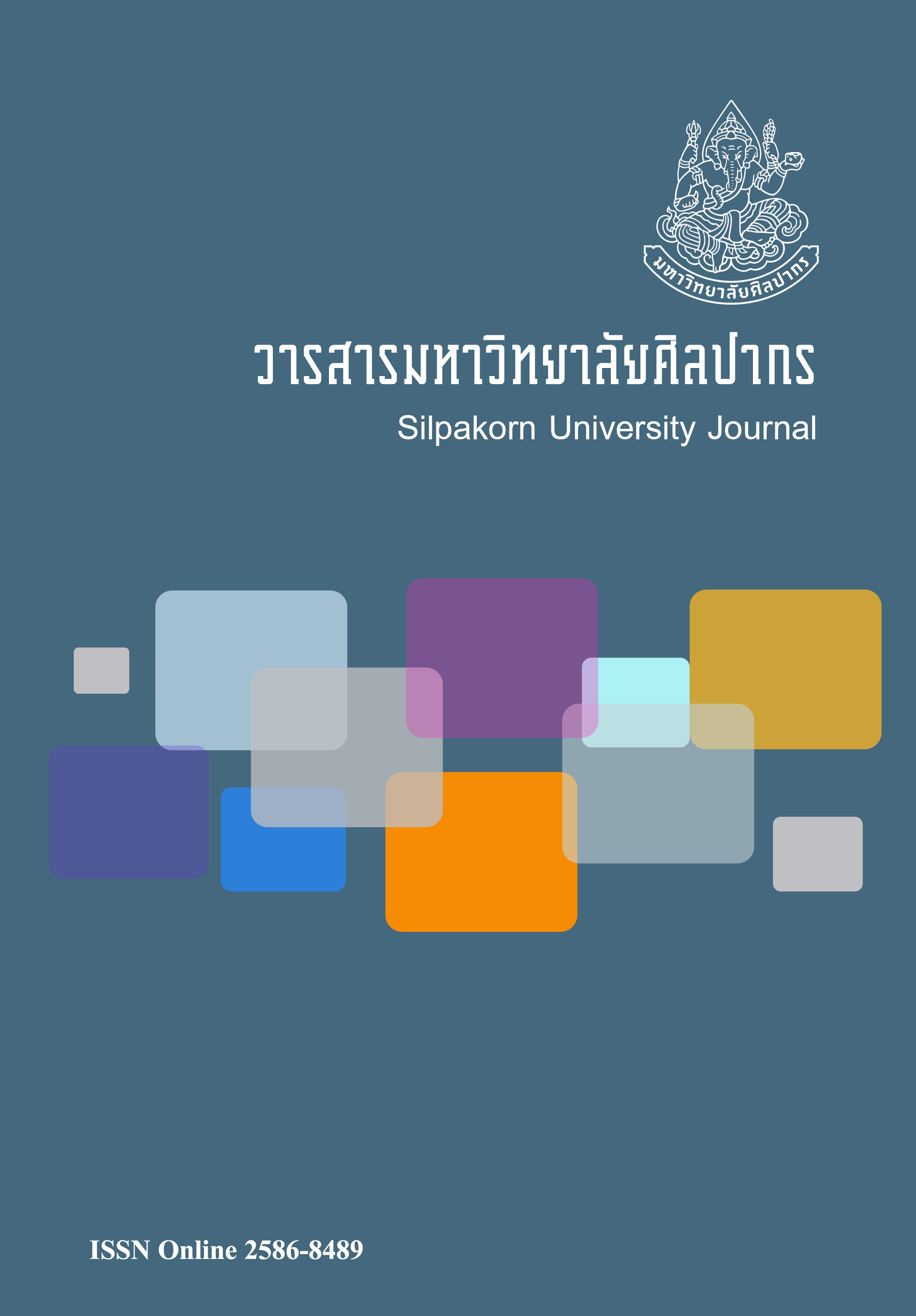การเพิ่มผลิตภาพแรงงานที่ไม่ได้สำเร็จการศึกษาระดับอาชีวศึกษาขององค์กรธุรกิจ ที่ดำเนินงานในรูปแบบองค์กรแห่งความสุข (Increasing labor productivity of non-vocational graduates in happy-workplace organizations)
Main Article Content
Abstract
ทักษะการผลิตและทักษะชีวิตมีความสำคัญอย่างยิ่งต่อแรงงานไทย โดยเฉพาะการเปิดเสรีทางการค้าการลงทุน ที่เคลื่อนย้ายทรัพยากรมนุษย์ในระดับวิชาชีพได้อย่างเสรี แรงงานที่มีทักษะไม่เพียงพอย่อมเป็นอุปสรรคต่อการดำเนินธุรกิจและการเติบโตทางด้านเศรษฐกิจของประเทศ บทความวิจัยนี้มีวัตถุประสงค์ (1) เพื่อเปรียบเทียบดัชนีผลิตภาพแรงงานเฉลี่ยที่อยู่ในกลุ่มอุตสาหกรรมการผลิตระหว่างองค์กรแห่งความสุขกับองค์กรธุรกิจทั่วไป (2) เพื่อวิเคราะห์ความสัมพันธ์ระหว่างทักษะชีวิตกับทักษะการผลิตของแรงงานที่ไม่ได้สำเร็จการศึกษาระดับอาชีวศึกษาแต่ต้องทำงานในสายงานที่ต้องใช้ทักษะฝีมือในระดับอาชีวศึกษาขององค์กรแห่งความสุข และ (3) เพื่อศึกษาระดับความพึงพอใจในการพัฒนาทักษะการผลิตและทักษะชีวิตของแรงงานที่ไม่ได้สำเร็จการศึกษาจากอาชีวศึกษาแต่ต้องทำงานในสายงานที่ต้องใช้ทักษะฝีมือในระดับอาชีวศึกษาที่อยู่ในองค์กรแห่งความสุข ประชากรเป้าหมายคือแรงงาน 226 คน ที่ไม่ได้สำเร็จการศึกษาระดับอาชีวศึกษา เครื่องมือที่ใช้คือแบบสอบถาม วิเคราะห์ข้อมูลโดยการวิเคราะห์ดัชนีผลิตภาพแรงงาน การทดสอบสัมประสิทธิ์สหสัมพันธ์ของเพียร์สัน การหาค่าเฉลี่ยและส่วนเบี่ยงเบนมาตรฐาน ผลการศึกษาพบว่า (1) ค่าเฉลี่ยผลิตภาพแรงงานที่อยู่ในองค์กรแห่งความสุขสูงกว่าแรงงานที่อยู่ในอุตสาหกรรมทั่วไป สะท้อนให้เห็นว่าการพัฒนาทักษะชีวิตของแรงงานอย่างต่อเนื่องขององค์กรแห่งความสุข ส่งผลให้ผลิตภาพของแรงงานที่ไม่ได้สำเร็จการศึกษาระดับอาชีวศึกษา มีทักษะฝีมือใกล้เคียงกับแรงงานที่สำเร็จการศึกษาระดับอาชีวศึกษาได้ (2) ทักษะชีวิตและทักษะการผลิตมีความสัมพันธ์กันสูงและเป็นไปในทิศทางเดียวกัน เมื่อแรงงานได้รับการพัฒนาทักษะชีวิตเพิ่มขึ้น ทักษะการผลิตก็เพิ่มขึ้นอย่างมีนัยสำคัญทางสถิติที่ระดับ .01 และ (3) แรงงานมีความพึงพอใจในการพัฒนาทักษะชีวิตมากที่สุดคือ มีทัศนคติที่ดีในการใช้ชีวิต เรียนรู้เพื่อทำประโยชน์ให้สังคมส่วนรวม ส่วนทักษะการผลิตแรงงานมีความพึงพอใจมากที่สุดคือ ได้รับการฝึกอบรมและการพัฒนาอย่างต่อเนื่อง ดังนั้นการเป็นองค์กรแห่งความสุขจะช่วยให้เกิดการพัฒนาแรงงาน เป็นแนวทางช่วยลดข้อจำกัดการขาดแคลนแรงงานในระดับอาชีวศึกษาลงได้
Production skills and life skills both play an important roles in the Thai labor market, particularly in the mobilization of professional-skilled labor in a free trade area. Inadequately-skilled labor force is a major obstacle to achieving business and economic growth in the nation. This study aims to: (1) compare the average labor productivity index between the happy workplace industry group and the general industry group, (2) analyze the relationship between life skills and production skills of non-vocational laborers had to work in a position that required vocational skills in a happy workplace industrial group and (3) study the satisfaction with the development of life skills and production skills of non-vocational laborers who had to work in a position that required vocational skills in a happy workplace industry group. The target population was 226 non-vocational laborers. The study instrument was questionnaires and data analysis involved analyzing labor productivity index, the Pearson correlation coefficient, mean, and standard deviation. The findings reveal that (1) the mean score of the labor productivity index of non-vocational labor working in the happy workplace industry group was higher than the ones working in the general industry group. This indicates that continuous development of laborers’ life skills in a happy workplace can enhance the non-vocational laborers’ productivity, making it close to vocational laborers. (2) Life skills are positively correlated with production skills at a significance level of .01; that is, when labor received training in life skills, their production skills increases as well. (3) The aspects of life skills development that the laborers have the highest level of satisfaction are positive attitude toward living and learning to contribute to the public. The aspects of production skills that the laborers have the highest level of satisfaction are receiving continuous training and development. The happy workplace concepts therefore are significant in developing labor and diminish the problems of vocational labor shortage.
Article Details
References
Chalamwong, Y. (2013). Upright of Thai labor movement, learning, surviving in 2013 (จับจังหวะแรงงานไทยขาขึ้น เรียน รู้ รอด ในปี 2556). Thailand Development Research Institute Foundation. Retrieved December 13, 2013 from https://tdri.or.th/tdri-insight/yongyuth-labour/
Dessler, G. (2013). A framwork for human resource management (9th ed.). New York: Pearson education.
Ehrenberg, R. G. (2014). Modern labor economics theory and public policy. (12nd ed.). New York: Pearson education.
George, J. B. (2015). Labor economics (7th ed.). New York: McGraw-Hill Education.
Kaewphanngam, C. & Tharmmapornphilas, R. (2013). Policy on education and human resource development in Thailand under the creative economy (นโยบายการศึกษาและการพัฒนาทรัพยากรมนุษย์ในประเทศไทยภายใต้เศรษฐกิจสร้างสรรค์). NIDA Economic Review Journal, 7(1).
Khunthongjan, S. (2010). A study on effective business type and characteristic of entrepreneur on sufficiency economy movement (การศึกษาประเภทธุรกิจและคุณลักษณะของผู้ประกอบการที่เอื้อต่อการขับเคลื่อนเศรษฐกิจพอเพียง). Bangkok: Idea Square Printing House.
Khunthongjan, S. (2016). Human resource management integrated (การบริหารทรัพยากรมนุษย์อย่างบูรณาการ). Bangkok: SE-Education Public Company Limited.
Kusumavalee, S. (2009). Sufficiency economy-based human resource management (การบริหารทรัพยากรมุนษย์ตามหลักเศรษฐกิจพอเพียง). Bangkok: Personal Management Association of Thailand (PMAT).
Office of Industrial Economics. (2014). Industrial index (ดัชนีอุตสาหกรรม).[Online]. Retrieved March 31, 2014 from https://www.oie.go.th/academic/index
Office of the Education Council. (2007). A comparative study on fscal system for education in Thailand and other countries (การศึกษาเปรียบเทียบงบประมาณเพื่อการศึกษาของประเทศไทยกับประเทศต่างๆ). A study Report of Office of the Education Council.
Office of The Royal Development Projects Board, Royal Development Projects. (2010). Work performance criteria of happy workplace (แบบตรวจสอบการเป็นองค์กรแห่งความสุข). Bangkok: (RDPB).
Office of The Vocational Education Commission. (2012). Ratio of vocational graduate (สัดส่วนผู้เรียนอาชีวศึกษา) [Online]. Retrieved March 31, 2014 from https://www.vec.go.th
Office of The Vocational Education Commission. (2013). Vocational curriculum 2013 (หลักสูตรประกาศนียบัตรวิชาชีพ) [Online]. Retrieved March 31, 2014 from https://bsq2.vec.go.th/course/2556/course56new.html
Personal Management Association of Thailand. (2009). Sufficiency economy-based human resource management (การจัดการทรัพยากรมนุษย์ตามปรัชญาของเศรษฐกิจพอเพียง). Bangkok: Personal Management Association of Thailand (PMAT).
Pholphirul, P. & Rukumnuaykit, P. (2013). Human capital and labor productivity in industrial in Thailand (ทุนมนุษย์กับผลิตภาพแรงงานในอุตสาหกรรมไทย). Research Report of Thailand Research Fund (TRF).
Planning and Information Department of Skill Development. (2014). The educational level of the workforce Thailand (ระดับการศึกษาของแรงงานไทย) [Online]. Retrieved December 21, 2014 from https://home.dsd.go.th/it/index.php?option=com_docman&task=cat_view&gid=35&Itemid=56
Puntasen, A. (2012). An aspect on sufficiency economy application for labor productivity increase (มุมมองการประยุกต์หลักปรัชญาของเศรษฐกิจพอเพียงเพื่อเพิ่มผลิตภาพแรงงาน). Lecture Document on September 8, 2012. Bangkok.
Puntasen, A. (2014). Fairness with quality of education and educational productivity and the well-being at workplace (ความเป็นธรรมกับคุณภาพการศึกษาและผลิตภาพการศึกษาและผลิตภาพจากสุขภาวะในการทำงาน). Bangkok: Thailand Research Fund (RTF).
Srisa-ard, B. (2013). Statistic methodology for research (ระเบียบวิธีวิจัย) (12nd ed.). Bangkok: Suweesan.
Tangtipongkul, K. (2012). Thai labor crisis (วิกฤติแรงงานไทย). Journal of TU ECON, Faculty of Economics, Thammasat University, 4(13).
Tansri, K. & Jarutanyalak, S. (2011). Unbalance of labor market: shortage of labor (ความไม่สมดุลของตลาดแรงงานนัยของการขาดแคลนแรงงาน). Khon Kaen: Bank of Thailand, Research Report of Regional Economy, Northeastern Office.
Thai Health Promotion Foundation. (2016). Happy workplace (องค์กรสร้างสุข) [Online]. Retrieved February 16, 2016 from https://www.thaihealth.or.th
Walton, R. E. (1975). Criteria for quality of working life. In L. E. Davis & A. B. Cherns (Eds.). The Quality of Working Life. New York: Free Press.
Wongrattana, C. (2011). Technique for research statistics (เทคนิคการใช้สถิติเพื่อการวิจัย) (8th ed.). Bangkok: Thepneeramitr Publishing.
World Bank Thailand. (2012). Innovation of skill and work performance in Thailand (นวัตกรรม ทักษะ และการสร้างงานในประเทศไทย) [Online]. Retrieved December 20, 2014 from https://www.worldbank.org/th/news/feature/2012/03/22/thailand-innovation-and-skills-will-generate-more-jobs

